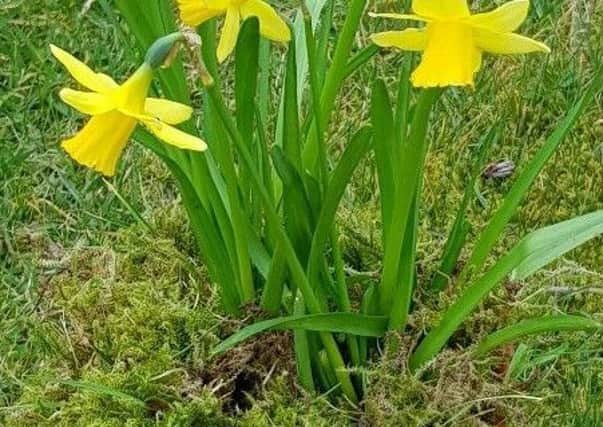Not all lawns need to be neat works of art


By then, we’ll be making the fourth or fifth cut of the lawns. Mild weather has seen grass growing since late January so the mower has been out on three occasions.
The moss in ours can be seen at a distance. You’ll also find some wild flowers mixed in. When a friend called some time ago, he saw the lawns through a bowling greenkeeper’s eyes and advised appropriate weed-killers. I explained the situation.
Advertisement
Hide AdAdvertisement
Hide AdThe moss and weeds came with the house, and this fellow’s head, freshly filled with turf management knowledge, met it head-on.
Iron sulphate powder was broadcast over the lawn and next morning there were large, black patches where moss had been. A selective weed-killer was then applied on a still day to avoid spray drift.
Throughout the following week all lawn weeds grew rampantly, then began twisting into weird shapes. Finally, they collapsed. The chemicals had done their job, but left large gaps in the lawn, which could be covered with good soil and grass seed.
When a new crop of moss and weeds returned with a vengeance it became clear this was not going to be a quick fix. Why was the moss so persistent?
Advertisement
Hide AdAdvertisement
Hide AdPoor drainage is often the root cause, but this is a light, sandy soil that drains well. Shade from overhanging trees encourages moss, but there were none.
A simple pH test revealed the soil to be just below neutral at 6.5, low enough to encourage moss, so a dressing of ground limestone followed. The mowing mechanism was raised slightly because cutting too low encourages colonisation.
The change came when I noticed garden birds feeding on invertebrates in the moss and collecting it as nesting material. We found it useful for covering compost in bowls of spring bulbs, and in lining hanging baskets.
The lawn weeds – self-heal, clover, daisies, etc – were seen in a totally different light when summer arrived. They became wild flowers, attracting bumblebees from June to September. Any grass cutting during this period now sees the lady of the house walking ahead of the mower alerting drowsy bees of its approach.
Advertisement
Hide AdAdvertisement
Hide AdMaintaining a weed and disease-free ornamental lawn demands year-round commitment. Such features are top notch and deserving of praise.
But, thankfully, there is also room for lawns such as mine, which still need mowing, but require less maintenance, are poison-free and a haven for insects and birds.